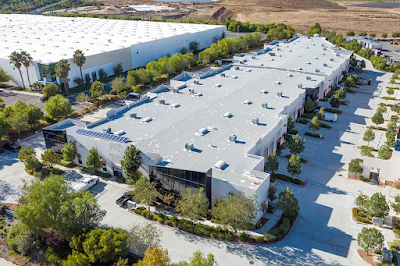A well-maintained and dependable roof is a priceless asset in a company, protecting your assets, workers, and investments from the weather. Even the toughest roofs, though, can deteriorate with time, which might result in problems like leaks, energy waste, and weakened structural integrity. Through this article, we will uncover some of the facets of residential roof replacement in buffalo And how they have come into picture.
We dive into the underlying advantages of upgrading a business roof in this extensive guide, including details on the improved security, energy savings, and higher property value it delivers. Understanding these advantages will enable you to make wise decisions for a more safe and profitable commercial future, whether you're a property owner, facility manager, or decision-maker.
Proper Steps Needs To Replace Commercial Roofing With Best Results:
Replacing a commercial roofing system is a significant undertaking that requires careful planning and execution to achieve the best results. Here are the proper steps to follow when replacing a commercial roof:
Inspection and Assessment -
Begin by conducting a thorough inspection of the existing roof to identify any damage, leaks, or structural issues. Assess the overall condition of the roof and determine if a replacement is necessary.
Budget and Planning -
Set a budget for the roof replacement project and outline a detailed plan. Consider factors such as roofing materials, labor costs, timeline, and any potential disruptions to business operations.
Selecting Roofing Materials -
Choose the most suitable roofing materials for your commercial property based on factors such as climate, building structure, energy efficiency, and budget. Common commercial roofing materials include single-ply membranes, metal roofing, built-up roofing (BUR), and modified bitumen.
Obtain Necessary Permits -
Check local building codes and obtain any required permits for the roof replacement project. Compliance with regulations is essential to ensure a smooth and legally sound process.
Safety Precautions -
Prioritize safety throughout the project. Provide appropriate safety training and equipment for the roofing crew and anyone else on-site.
Notify Stakeholders -
Inform employees, tenants, and other stakeholders about the roof replacement project and its expected timeline. Coordinate with businesses within the building to minimize disruptions to their operations.
Remove Existing Roofing -
Carefully remove the old roofing materials, taking care to handle and dispose of them properly. Proper waste management is crucial to prevent environmental harm.
Repair Substrate and Decking -
Inspect the roof substrate and decking for any damage or deterioration. Make necessary repairs or replacements to ensure a solid foundation for the new roof.
Installation of New Roofing -
Engage experienced and certified roofing contractors to install the new roofing system. Ensure proper installation techniques to prevent future issues.
Quality Control and Inspections -
Conduct regular quality control checks during the installation process. Perform a final inspection to verify that the new roof meets industry standards and manufacturer specifications.
Benefits Of Replacement Of Commercial Roofing:
A home's roof is crucial because it protects the inside from the weather and offers crucial structural support. The main functions of a roof in a house are as follows:
Defending against weather elements -
The main purpose of a roof is to protect the house's inside from weather conditions including rain, snow, hail, wind, and sunshine. It guards against potential water damage, mold, and decay while preventing water from entering the structure.
Temperature Control -
The home's insulation and temperature control are aided by the roof. It promotes energy efficiency and lowers heating and cooling expenses by helping to keep the interior cool in hot weather and warm in winter months.
Support for Structure -
The weight of the roof and other components is distributed among the walls and base by the roof, which also acts as a structural support for the entire structure. The stability and structural integrity of the home as a whole depend on a well-designed roof.
Beauty Appeal -
A house's roof is a key component of its architecture and has a big impact on how it looks overall. Different roofing types and materials may give a building more personality and aesthetic appeal.
Security and Safety -
The security and safety of tenants is ensured by a roof that has been erected and maintained appropriately. It lessens the chance of accidents involving roof damage and prevents attackers from entering the house from the top.
Keeping Interior Damage at Bay -
Water leaks, which can harm the home's ceilings, walls, floors, and possessions, are avoided by having a well maintained roof.
Durability of the Structure -
A strong, well-maintained roof can increase the building's longevity in general. Regular roof inspections and repairs aid in early problem detection and help avoid future, more serious concerns.
Value at Resale -
The resale value of the house is increased by a well-maintained roof. When making purchases, potential purchasers frequently take the quality and durability of the roof into account.
Concluding Remarks:
As we embark on the journey of embracing the advantages of a commercial roof replacement, it is important to prioritize professional expertise and adhere to safety guidelines. Careful planning, collaboration with certified contractors, and proper maintenance can maximize the benefits and longevity of the new roof.

Comments
Post a Comment